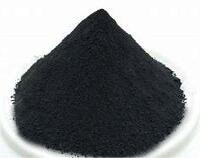1. Introduction
Just 24 hours ago, a major additive manufacturing firm announced a breakthrough in recycling titanium powder for 3D printing—slashing waste and cutting costs by up to 30%. Suddenly, everyone from aerospace engineers to hobbyist makers is buzzing about titanium powder again. And honestly? It’s about time. This silvery-gray wonder dust isn’t just for sci-fi anymore—it’s reshaping industries one layer at a time.

So, what exactly is titanium powder? And why does it cost more per kilogram than your monthly coffee habit? Buckle up—we’re diving into the sparkly, sometimes pyrophoric world of titanium powder with a side of molybdenum and tungsten for good measure.
2. What Is Titanium Powder?
Titanium powder—often abbreviated as Ti powder—is a fine particulate form of titanium metal. Unlike the solid bars you might imagine in a lab, this stuff looks like metallic glitter with serious performance credentials. It comes in various grades: pure titanium powder, titanium alloy powder (like the superstar Ti6Al4V, also called Ti64), and even exotic blends like titanium diboride (TiB2) or titanium nitride powder.
Fun fact: Not all titanium powder is created equal. You’ve got HDH (hydride-dehydride) titanium powder—cheap but angular—and gas atomized titanium powder, which is spherical, flow-friendly, and perfect for 3D printing. If your printer could talk, it would beg for the spherical kind.
3. How Is Titanium Powder Made?
Making titanium powder isn’t like blending flour and sugar. It’s a high-stakes metallurgical ballet. The two main methods are:
- Hydride-Dehydride (HDH): Titanium sponge is crushed after hydrogen treatment. Cheap, but yields irregular particles—great for pressing, not so much for smooth 3D printing.
- Gas Atomization: Molten titanium is blasted with inert gas into tiny droplets that solidify mid-air into perfect spheres. Expensive? Yes. Worth it for aerospace and medical implants? Absolutely.

And no, you can’t make it in your kitchen blender—unless you enjoy spontaneous combustion. Titanium dust can be pyrophoric, meaning it ignites in air if finely divided. Safety first, folks!
4. Titanium Powder Uses: Beyond Sci-Fi
Titanium powder uses span from the mundane to the mind-blowing:
- Additive manufacturing (a.k.a. 3D printing titanium powder for jet engines, dental implants, and custom bike frames).
- Metal injection molding (MIM) for tiny, complex parts.
- Pyrotechnics (yes, titanium flash powder creates those bright white sparks in fireworks—but don’t try this at home).
- Coatings: Titanium coated diamond powder enhances cutting tools, while burnt titanium powder coat finishes give hardware that sleek, space-age look.
Meanwhile, TIO2 powder (titanium dioxide) is a whole different beast—used in sunscreen, paint, and yes, some powdered sugar. But that’s not metallic titanium powder; it’s an oxide. Don’t mix them up unless you want chalky cookies instead of rocket fuel.
5. Titanium Powder Price: What’s the Damage?

Ah, the million-dollar question: how much does titanium powder cost? Well, titanium powder price per kg ranges wildly:
- Pure titanium powder: $80–$150/kg
- Ti6Al4V powder (the go-to for 3D printing): $200–$400/kg
- Spherical, gas-atomized titanium 3D printing powder: easily $300+/kg
So, titanium powder for 3D printing price tags sting—but they reflect purity, particle shape, and oxygen content. Want to buy titanium powder? Reputable titanium powder suppliers like international titanium powder vendors or specialized additive manufacturing distributors are your best bet. Just don’t fall for sketchy ‘titanium powder for sale’ ads on random forums—quality matters when your implant depends on it.
6. Meet the Extended Family: Molybdenum & Tungsten Powders
While titanium steals the spotlight, its metallic cousins are equally fascinating. Ever heard of molybdenum powder? Also called moly powder, it’s used in high-temp alloys, lubricants (molybdenum disulfide powder—aka MoS2 powder—is a dry lubricant superhero), and even filaments. Molybdenum powder price hovers around $30–$70/kg, depending on form (ferro molybdenum powder vs. pure molybdenum metal powder).
Then there’s tungsten powder—the heavyweight champ. With the highest melting point of all metals, tungsten metal powder is dense, tough, and ideal for radiation shielding, filaments, and armor-piercing rounds (in military contexts, of course). Tungsten powder price per kg? $40–$100+, and tungsten carbide powder price per kg can exceed $150. Global Tungsten & Powders Corporation and other global tungsten products suppliers dominate this niche.
Both molybdenum and tungsten powders share similarities with titanium powder in additive manufacturing—but each brings unique strengths. Think of them as the Avengers of advanced metal powders.
7. Where to Buy & Final Thoughts
Ready to buy titanium powder? Look for certified titanium powder suppliers offering specs like oxygen content <1000 ppm and spherical morphology if you’re into additive manufacturing. Whether you need TiH2 powder for foaming metals or nano-sized TIO2 nano powder for cosmetics, always verify material certifications.
In short: titanium powder isn’t just metal dust—it’s the future in granular form. From life-saving implants to Mars-bound rockets, this powder punches far above its weight. And while it won’t sweeten your coffee, it might just build the engine that gets you to the café faster.
So next time someone asks, ‘What is titanium powder used for?’—you’ll have more than a spark of an answer.
Our Website founded on October 17, 2012, is a high-tech enterprise committed to the research and development, production, processing, sales and technical services of ceramic relative materials such as What. Our products includes but not limited to Boron Carbide Ceramic Products, Boron Nitride Ceramic Products, Silicon Carbide Ceramic Products, Silicon Nitride Ceramic Products, Zirconium Dioxide Ceramic Products, etc. If you are interested, please feel free to contact us.
